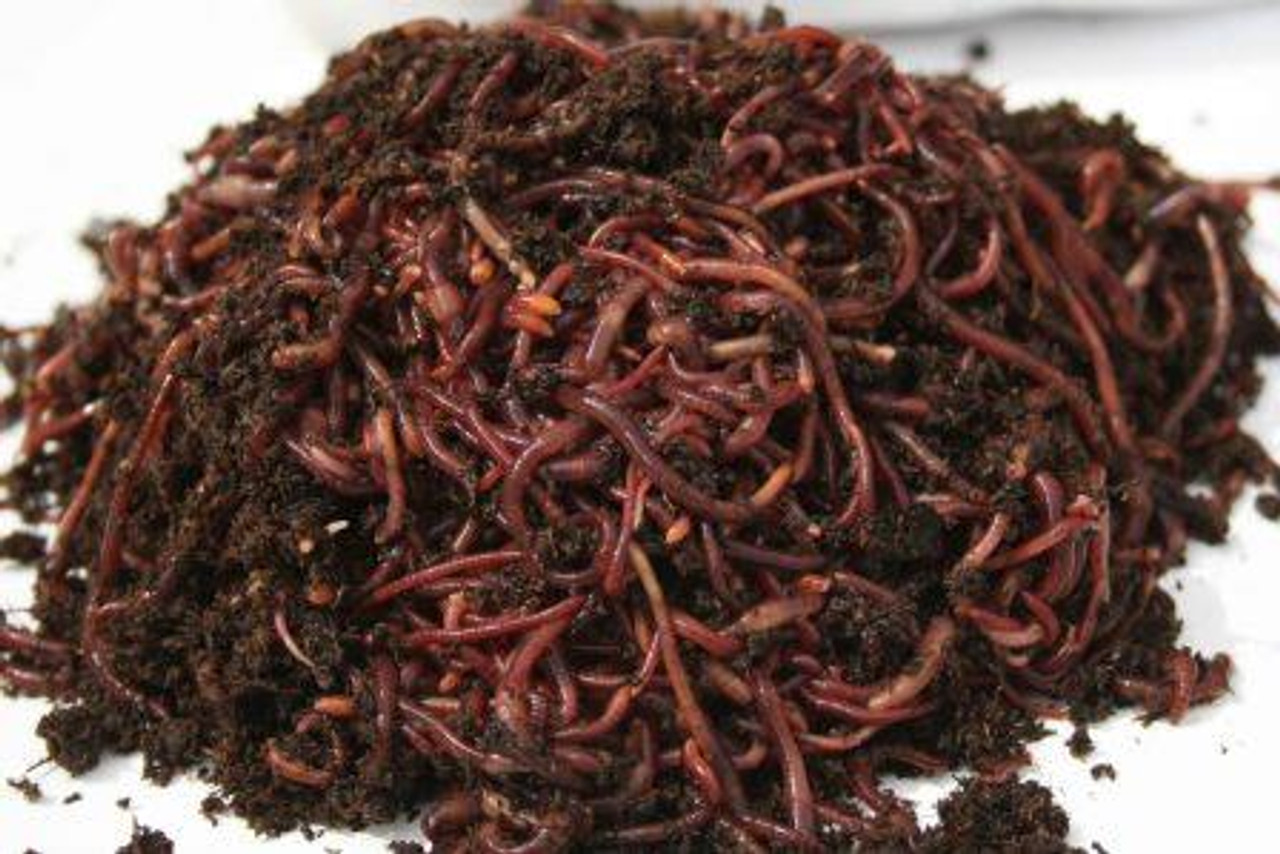Understanding the Conveniences of Red Wiggler Composting: Just How This Reliable Method Changes Organic Waste Into Nutrient-Rich Soil Amendments
Red Wiggler composting, employing the species Eisenia fetida, presents a compelling method to organic waste management, transforming kitchen area scraps and backyard particles into valuable soil modifications. This approach not just enhances soil fertility yet likewise addresses pushing ecological worries, consisting of land fill waste decrease and greenhouse gas discharges.
What Are Red Wigglers?
Red wigglers, scientifically known as Eisenia fetida, are a varieties of earthworm that play a crucial function in vermicomposting systems. These worms are characterized by their reddish-brown color, fractional bodies, and a distinct capacity to grow in organic-rich atmospheres, making them optimal for composting applications - Red Wiggler Composting. Unlike their garden-dwelling equivalents, red wigglers favor to live in the top layers of soil, where rotting issue is plentiful
Normally measuring in between 3 to 4 inches in length, red wigglers have a high reproductive price, allowing them to multiply swiftly under optimum problems. They possess an one-of-a-kind digestive system that enables them to refine organic waste effectively, converting it right into nutrient-rich spreadings, which are very useful for plant growth.
Their resistance to differing dampness levels and temperature level ranges better enhances their utility in vermicomposting configurations, making them a favored choice among composting fanatics. In addition, red wigglers are cardiovascular microorganisms, which necessitates a well-aerated composting atmosphere, guaranteeing reliable decay. Recognizing the biological traits and behaviors of red wigglers is necessary for optimizing their use in lasting waste management methods.

Advantages of Vermicomposting
Utilizing the power of vermicomposting deals a multitude of environmental and agricultural advantages. To start with, it substantially lowers organic waste in garbage dumps, consequently minimizing methane discharges, a powerful greenhouse gas. By drawing away food scraps and backyard waste to vermicomposting, we sustain an even more lasting waste administration system.
Furthermore, vermicomposting enhances soil health. The spreadings generated by red wigglers are abundant in essential nutrients, germs, and enzymes, boosting dirt structure and fertility. This nutrient-rich modification advertises durable plant growth and enhances water retention, decreasing the need for chemical fertilizers.
Furthermore, vermicomposting fosters biodiversity in the dirt environment. The introduction of useful microorganisms from worm castings help in illness reductions and nutrient cycling, developing a much healthier atmosphere for plants.
Economically, vermicomposting lowers the expenses associated with chemical inputs and waste disposal. Farmers and gardeners can cultivate premium fruit and vegetables at lower expenses, adding to food safety and sustainability.
Exactly How to Beginning Composting
Beginning a composting endeavor can be a uncomplicated and gratifying procedure. This will certainly assist maintain a well balanced temperature, critical for the composting process.
Collect organic materials such as kitchen scraps, lawn waste, and shredded paper. Objective for a well balanced mix of 'eco-friendly' products, high in nitrogen (e.g., fruit scraps, coffee grounds), and 'brown' products, rich in carbon (e.g., dried leaves, cardboard) A ratio of about 2:1 green to brown products is ideal.
Begin layering your products, guaranteeing ample air circulation by turning the heap routinely. This promotes aerobic disintegration, decreasing odors and speeding up up the procedure. Screen moisture levels; the compost ought to seem like a wet sponge but not overly wet.
Nutrient Profile of Vermicompost
Composting, specifically with red wigglers, yields a nutrient-rich product called vermicompost. This organic amendment is distinguished by its high concentration of essential nutrients, making it a vital resource for gardening and farming. Vermicompost usually includes elevated degrees of macronutrients such as phosphorus, nitrogen, and potassium, which are vital for plant growth. Furthermore, it provides micronutrients like iron, magnesium, and calcium, fostering durable plant development and improving dirt wellness.
The microbial task existing in vermicompost better enhances its account, introducing advantageous bacteria and fungi that advertise vitamins and mineral accessibility and uptake in plants. This biological part help in suppressing plant conditions and boosting soil structure, leading to improved water retention and aeration.

Environmental Impact of Composting
The environmental impact of composting, specifically through the use of red wigglers, is extensive and multifaceted. This method considerably lowers the volume of organic waste sent out to garbage dumps, which subsequently decreases greenhouse gas discharges, especially methane-- a powerful contributor to climate change. By drawing away natural materials from garbage dumps, red wiggler composting not only aids mitigate environmental deterioration yet likewise advertises lasting waste management methods.

In addition, composting adds to carbon sequestration, as the process records co2 from the environment and stores it in the soil. This natural process aids in combating environment adjustment click to read while enriching the dirt - Red Wiggler Composting. On the whole, red wiggler composting offers a viable, eco-friendly option for waste monitoring and ecological sustainability, promoting healthier ecosystems and an extra lasting future
Final Thought
In final thought, Red Wiggler composting serves as a reliable method for transforming organic waste right into valuable soil amendments. The procedure not only improves soil fertility and framework but likewise mitigates ecological problems associated with waste disposal.
Red Wiggler composting, using the species Eisenia fetida, offers a compelling approach to natural waste management, converting kitchen area scraps and yard particles right into beneficial soil modifications. Unlike their garden-dwelling counterparts, red wigglers prefer to populate the upper layers of dirt, where decomposing issue is plentiful.
The spreadings produced by red wigglers are abundant in important nutrients, microbes, and enzymes, boosting soil structure and fertility. The nutrient-rich byproducts of red wiggler task enhance dirt framework, increase water retention, and promote biodiversity within the dirt community.In verdict, Red Wiggler composting offers as a reliable technique for transforming organic waste into beneficial dirt amendments.